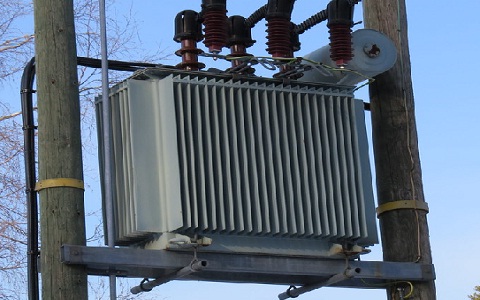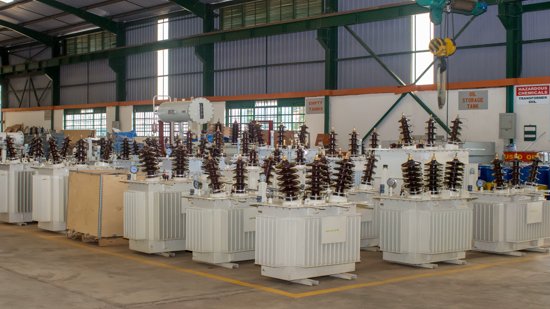We at Fern Engineering & Supplies know that cables and sockets are not the only things that make electricity work. Transformers are at the center of power distribution. In Uganda, distribution transformers make electricity usable in homes, offices, schools, and factories.
A distribution transformer takes high-voltage electricity from the national grid and lowers it to levels that are safe to use in buildings and on equipment.
A distribution transformer does the important job of changing high-voltage power into a form that is safe and useful every time you turn on a light in Kampala, run a fridge in Gulu, or power machinery in Jinja. Without these devices, the electricity from the grid would be too strong for appliances and would break them right away.
Different types of distribution transformers are available to meet different needs. Pole-mounted transformers are common in homes and small businesses. They are mounted on electric poles to serve neighborhoods or small businesses. In bigger buildings, pad-mounted transformers are installed at ground level inside a secure cabinet.
Industrial distribution transformers are used in factories, hospitals, and big buildings to handle heavier loads. We provide and install all types, making sure that our clients get solutions that are safe, reliable, and last a long time.
Safety. Electricity that is made and sent through the national grid has very high voltage, sometimes thousands of volts. Distribution transformers bring this down to safe levels, which is usually between 220 and 415 volts. This is what homes and businesses in Uganda use. If this reduction didn’t happen, dangerous currents would get to equipment and buildings.
Efficiency. Transformers make sure that electricity is sent at the right voltage and not wasted. Too much voltage can break appliances, and too little voltage can make them work less well. You can save energy and make your equipment last longer if you use the right transformer.
Reliability. A distribution transformer that is installed and maintained correctly cuts down on downtime. This level of reliability is not optional for schools, hospitals, and businesses. A sudden loss of power can stop production, hurt business, or even kill people.
As towns grow and rural electrification gets better, Uganda’s need for power is growing. Distribution transformers make it possible to bring reliable power to new housing developments, shopping centers, and industrial parks.
Compliance. All projects in Uganda need certified transformers from the Uganda National Bureau of Standards and utility companies. Using approved systems keeps people safe, avoids fines, and builds trust with clients and regulators.
We at Fern Engineering & Supplies offer full services for distribution transformers, including supply, installation, and regular maintenance.
We offer a wide range of distribution transformers, such as those that are mounted on poles, pads, or oil, as well as dry-type models. We only buy from certified manufacturers and test all of our products to make sure they work.
We install and repair transformers for homes, schools, businesses, and other types of buildings. Our technicians make sure that everything is grounded correctly, the cables are in the right place, and the mounting is safe for long-term use.
We fix broken transformers, no matter what the problem is: oil leaks, damaged windings, or a blown fuse. To keep downtime to a minimum, our team responds quickly.
We maintain transformers by checking them regularly, testing the oil, and checking the temperature. Preventive maintenance makes things last longer and lowers the chance of them breaking down suddenly.
We also improve systems that are old. We can replace your old or small transformer with a new one that can handle more power and meets current needs.

What does a distribution transformer do?
A distribution transformer takes high-voltage electricity from the grid and lowers it to levels those homes, businesses, and industries can use. It makes sure that power is safe, reliable, and useful every day. Without it, the electricity in the grid would be too strong for devices and systems to work.
What kinds of distribution transformers do people in Uganda use?
In homes and small businesses, transformers are mounted on poles. Transformers that are mounted on pads are used in bigger places like schools and shopping malls. Heavy-duty users like factories, hospitals, and others use industrial-grade transformers. We provide all kinds based on what our clients need.
How can I tell what size transformer I need for my project?
The size depends on how much load you need. An undersized transformer will overheat and trip a lot, while an oversized one might waste resources. Based on how you use it and how much more space you might need in the future, our technicians figure out the right rating.
How long do distribution transformers last?
If you take care of it, a transformer can last 20 to 30 years. But if systems aren’t properly maintained, Uganda’s weather, power outages, and load growth can shorten their lifespan. Regular maintenance makes things last much longer.
What is the difference between transformers that are filled with oil and those that are not?
Oil-filled transformers are common outside and use insulating oil to cool down. Air cooling is used in dry-type transformers, which makes them better for indoor use. Your choice will depend on where you are installing it and how safe it needs to be.
What is the importance of maintaining transformers?
Transformers can handle big loads and high voltages. Small problems like oil leaks or corroded connections can turn into big problems if they aren’t fixed. Regular checks keep things running smoothly and for longer.
If a transformer breaks, can it be fixed?
Yes, a lot of problems with transformers, like broken coils, oil leaks, or broken bushings, can be fixed. In some cases, though, it’s cheaper to replace the unit, especially if it’s old or too small.
Do you sell transformers to help bring electricity to rural areas?
We do work with contractors, NGOs, and government programs to get transformers to rural areas and set them up. Our solutions are meant to help communities grow and make it easier for people to get reliable electricity.
Do you have proof that your transformers are safe?
Yes, all of our transformers meet the standards set by the Uganda National Bureau of Standards. We also give paperwork for projects that need to be certified for inspections or government approval.
Do you give warranties?
Yes, our transformers come with warranties from the manufacturer, and we guarantee that our installations will work. We will fix or replace a unit for free if it breaks while being used normally during the warranty period.
Uganda’s electricity supply depends on distribution transformers, which make sure that high-voltage power is brought down to safe and usable levels. They keep equipment safe, make things work better, and make sure that homes, businesses, and industries always have power.
We sell certified transformers at Fern Engineering & Supplies, install them professionally, and offer reliable maintenance to keep them running for decades.
Call us today to place your order or ask for a site visit. We can deliver the right solution anywhere in Uganda, whether you need a pole-mounted unit for a small estate, a pad-mounted system for a business complex, or an industrial transformer for a factory.
Do you have any inquiries or question regarding our Distribution Transformers service in Uganda
